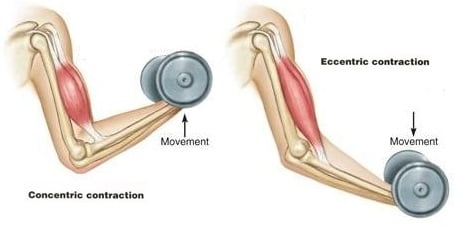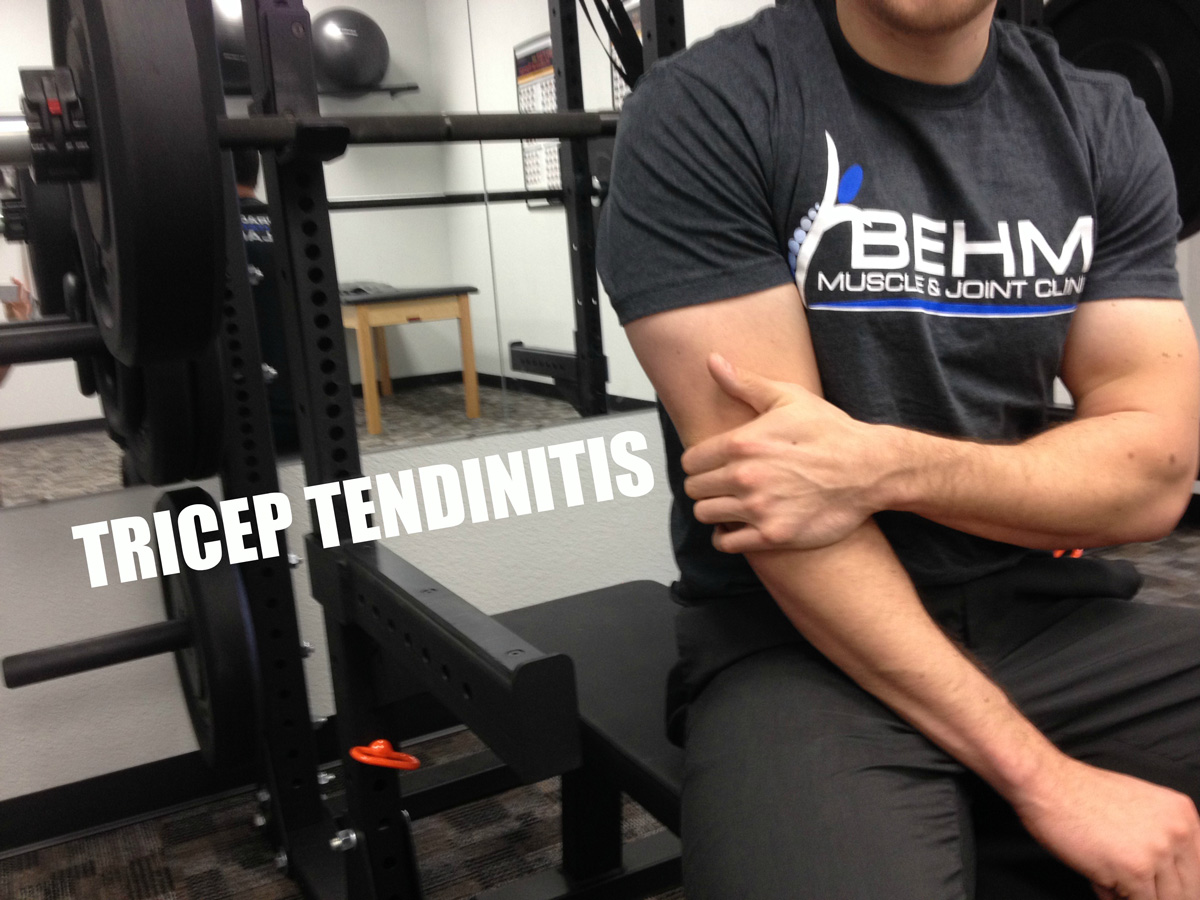Eccentric loading and tendinitis
What is eccentric loading?
Eccentric and concentric are very common terms in the world of biomechanics and exercise. The term eccentric has to do with the lengthening of a muscle. The term concentric, which has to do with the shortening of a muscle. Think of it in terms of lifting a weight, such as in a bicep curl. Whenever you curl the dumbbell you’re performing a concentric movement and the bicep muscle shortens. Conversely, when you lower the dumbbell back down to your side, you’re performing an eccentric movement and the bicep muscle lengthens.

Eccentric vs. concentric movements
According to the American College of Sports Medicine, when performed correctly and safely, eccentric exercise has several benefits including:
- Improved muscle coordination
- Improved balance
- Increased strength in the entire range of motion of each joint
- Increased strength across a variety of movement speeds
- Increased muscle power and sport performance
- Recovery from tendon related injuries
Tendinitis, tendinosis, and tendinopathy
Tendon related injuries are one of the more common injuries that we see and treat in the clinic. The active population and repetitive nature of running and weightlifting take a toll on the tendon when proper recovery methods are not being done. We see a diagnosis of tendinitis (Achilles, patellar, biceps) all the time however what we are really dealing with is a tendinopathy.
People think tendinitis is solely inflammation of the tendon. Research has shown that while the tendon is inflamed, it’s also partially broken down and degraded. This is why it’s often referred to as tendinosis – “osis” meaning degradation of the tendon, instead of “itis” which just means inflammation. The term tendinopathy combines both to mean “disease of the tendon.”
Eccentric loading and tendon repair
With a tendon injury we combine various manual therapy techniques as well as eccentric loading exercises. The manual therapy techniques are used to stimulate cell activity in a tendon and to increase blood flow to the area. Some of those manual therapy techniques include: dry needling, active release technique, instrument-assisted soft tissue manipulation, and band flossing. The techniques all work to let your body know that the tendon is in need of a little TLC and to repair the damaged tissue by promoting blood flow and decreasing tension.
Too much load or too much speed is one way the tendon got broken down. To repair it you must start with slow tempo exercises. Numerous studies have shown that eccentric-only protocols and heavy, slow concentric/eccentric protocols work to repair the damaged tendon. Make sure when incoorporting eccentric exercises that you are listening to your body. Pain doesn’t always equal harm. Feeling pain up to a 5 on a scale of 1-10 is okay during the strength exercises. Studies show that when researchers have patients push through pain, the tendon will supercompensate overnight. This increases healing. But if you have increased pain 24 hours later that’s a sign that you should back off a bit.
The Behm Muscle & Joint Clinic approach to tendinopathy
Its important to know that tendons are slow healers. It takes months, not weeks, to get them fully healed. Old school methods of R.I.C.E. (Rest, ice, compress, and elevate) or even passive therapies such as ultrasound and tens may provide temporary pain relief but if you are looking for long term tendon repair specific eccentric loading exercises combined with some of our other services (dry needling, active release technique, graston, and band flossing) will insure the tendon repairs fully and you return to you full activities of daily living. If you or someone you know is dealing with a tendinopathy do not hesitate to give us a call at 402-292-1450 or schedule a consultation online.
About the author
Dr. Behm was born and raised in Papillion, NE. He received his Bachelor’s degree in Exercise Science from the University of Nebraska – Omaha and following his undergraduate studies was a certified personal trainer (NSCA-CPT – National Strength and Conditioning Association) in the Omaha area for years, helping clients achieve their health and fitness goals. He received his Doctorate in Chiropractic from Cleveland Chiropractic College – Kansas City. While in school, he received multiple certifications to increase his knowledge of the human body and how to properly assess and treat his patients. This translates into our integrative approach to Chiropractic care and our combination of therapies to better address your musculoskeletal complaints. Dr. Behm is excited to return to his hometown and serve the community around him.
